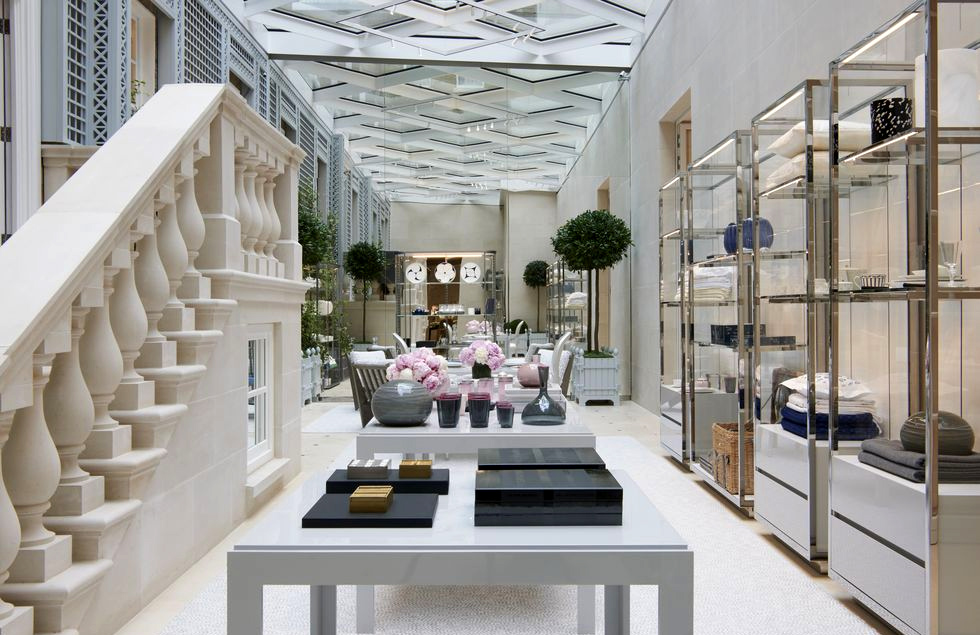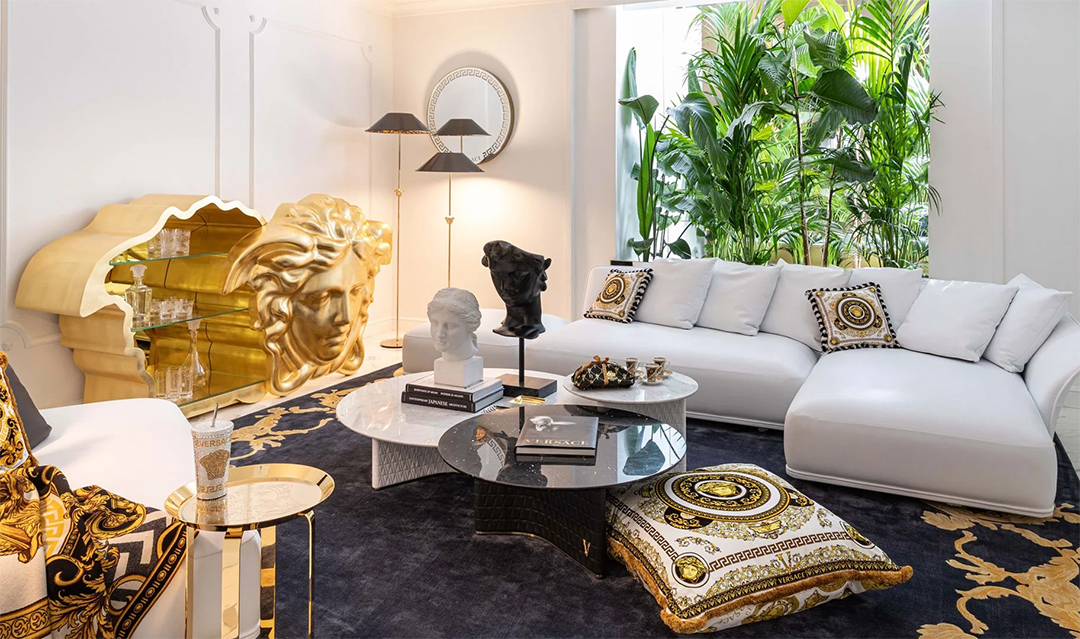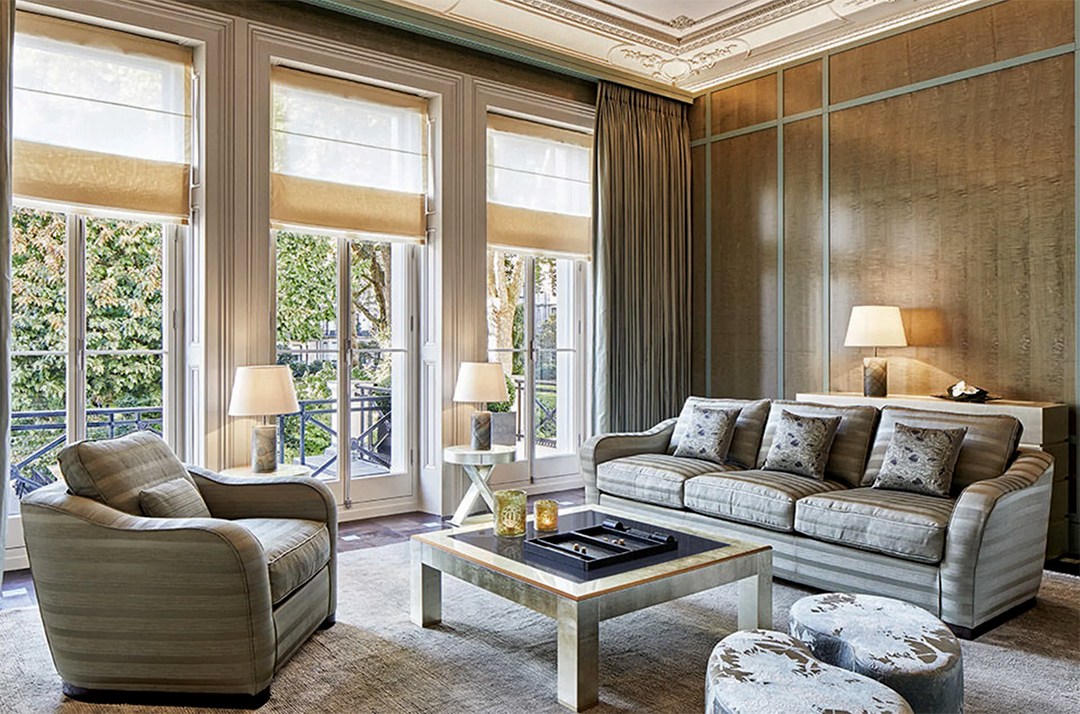How did it come to be that renowned Haute Couture Houses began offering discerning clients not only works of art in the form of dresses but also their own interior design solutions? Why do the wealthiest individuals on the planet commission interiors from the same brands they dress in? Why do luxury furniture and accessories from fashion houses appear more opulent than the creations of specialised furniture and decor manufacturers? Is there anything in design that top designers of luxury brands cannot master?
What connects fashion and interiors? First and foremost, it is textiles, the combination of colours and textures, and the creation of a unique space that provides a sense of luxury and harmony. And in all of this, the designers of renowned Haute Couture Houses have no equal.
When a client acquires their first luxury garment, it becomes apparent that carefully crafted designer looks require context and atmosphere. High-end design creates a lasting addiction, and the dictate of taste knows no bounds. Consequently, changes in the wardrobe are soon followed by changes in interior spaces—and indeed in the environment in which a person exists. For a Haute Couture House client, everything becomes significant—the address where they reside, the architecture of the building, the neighbours, and finally the quality of materials and the opulence of the interiors of each room where guests, business partners, and suppliers can be received. Here, it is crucial that the image, message, and taste of the Couture House are palpable. The desired effect is a singular style of decoration that creates an aura of luxury and reflects the self-perception of the owners and their sophisticated guests.

Source: Dior
There were several paths that brought Couture brands into interior design. Houses like Christian Dior began by designing their own headquarters and boutiques. The founder of the House invited his acquaintance, whose taste he trusted implicitly, to carry out this work. The interior solutions for Dior were based on the works of former newspaper photographer Victor Grandpierre. Thanks to him, the interiors of Dior’s salons became a symbol and part of the visual code of the brand. Silvery walls, white stucco, and designer furniture in the same tones attracted connoisseurs of luxury who flocked to Dior boutiques from all over the world. It is not surprising that Victor Grandpierre later also participated in the creation of the brand’s logo, its communication strategy, and even in the design of the bottle for the House’s first perfume—Miss Dior.
Another approach was taken by renowned Houses such as Armani and Versace. The genius of design—the great Italian Giorgio Armani—became interested in interior design when he became captivated by decorating his own home. For his residence, Armani created not only original decor but also special furniture, and he could not stop there. Designing interiors turned into a true passion, and in 2000 the Fashion House launched an entire line of home products.

Source: Luxurylivinggroup.com
In turn, the demands of Versace House’s clients for exceptional, flamboyant luxury and gold could not go unnoticed by its owners. The first interior solutions from Versace were inspired by the ultra-luxurious residences created by the great founder of the House, Gianni Versace, in the many palaces owned by the couturier’s family around the world. The finest Italian textiles, furniture in antique and ancient Roman styles, and at the heart of every composition—the golden head of Medusa—Gorgon, the mystical symbol of the renowned House. Recently, much buzz was created by a collaboration between Versace and one of the best and most experienced manufacturers of elite porcelain—German factory Rosenthal—which resulted in several lines of luxurious tableware and accessories. Now, fans of the brand’s aesthetics can enjoy a burst of luxury during every meal.
The ultra-luxurious brand Hermes also has its own line of exquisite crystal and porcelain. Both the Enfant Terrible of the fashion world, Haute Couture star John Galliano, and creative Scandinavian brands like the famous Acne Studios, which emphasises the visual preferences and convictions of its brand in the design of disproportionate, attention-grabbing furniture, are passionate about creating furniture and decor.
The Fendi fashion house occupies a special place in interior design projects. The brand began producing exclusive furniture in 1989, during the reign of the legendary Kaiser—Karl Lagerfeld, who remained its creative director for many decades. Over 25 years, the company’s designers have created hundreds of exclusive projects for private apartments and public spaces of the highest level of luxury. The range of Fendi Casa’s interior division includes not only furniture and textiles of exclusive quality but also luxurious lighting fixtures and furniture for kitchens, dining rooms, and outdoor spaces. This approach allows the company’s designers to transform entire estates into masterpieces of Fendi’s refined style, where interior solutions harmoniously blend with external landscapes.
Thus, Haute Couture Houses have much to offer to those who demand that the space of a luxury lifestyle not be limited to clothing but extend to the entire living environment. The secrets of the finest textiles, a perfect sense of proportion, the ability to combine colours and textures, and, most importantly, the exceptional ability to weave the fabric of luxury give couture designers a significant advantage in creating true interior masterpieces. After all, who better than the master who dresses your capricious and dazzling wife to dress your luxurious premises, where the eye must rejoice every second, even when the clothes on their owners are entirely absent?
Source: The Gaze







